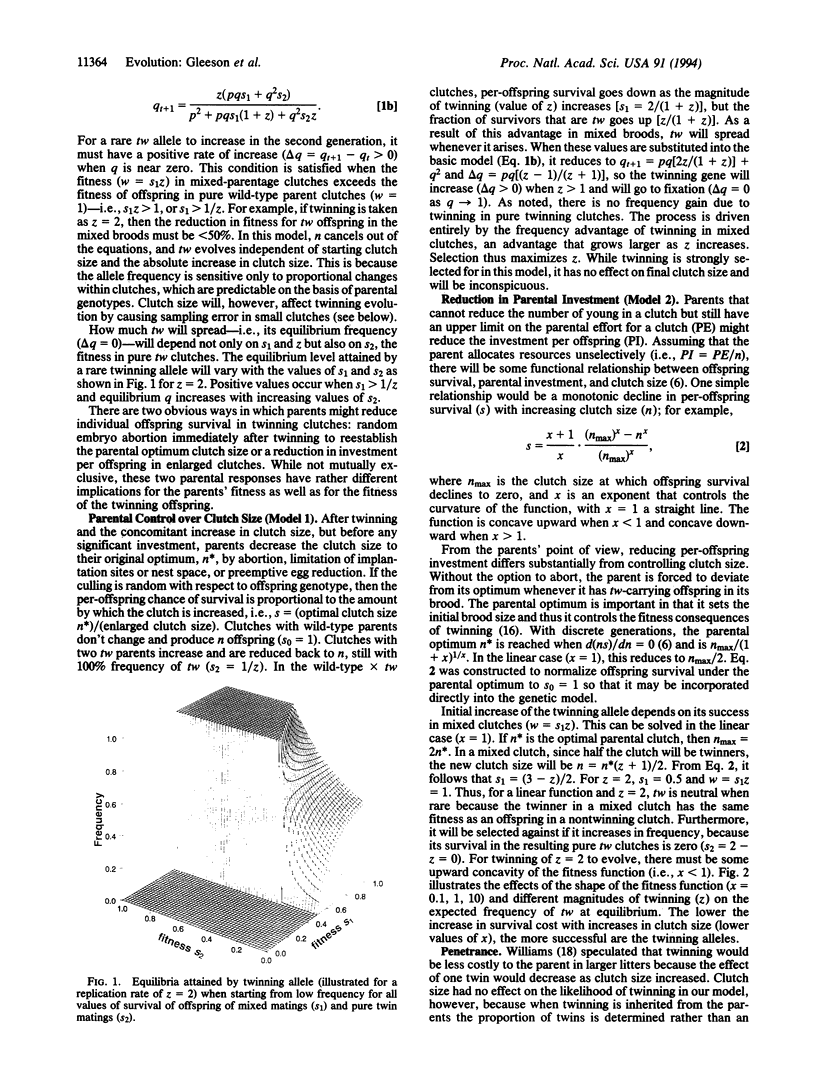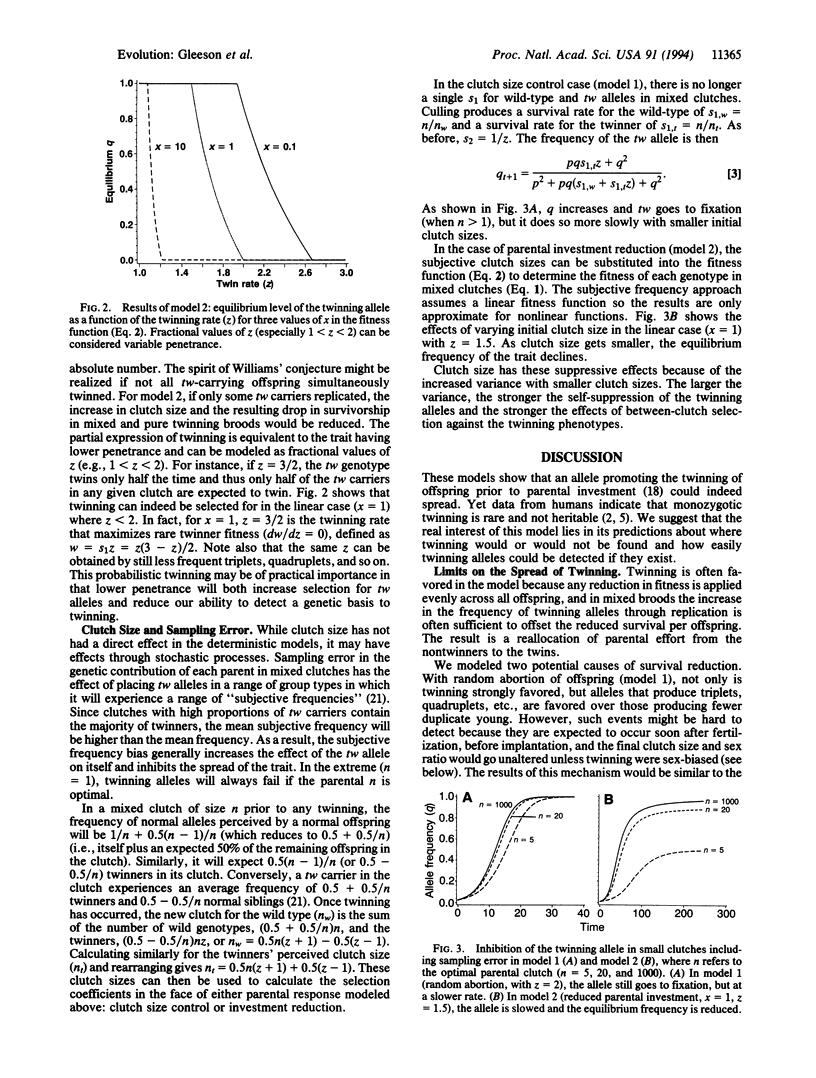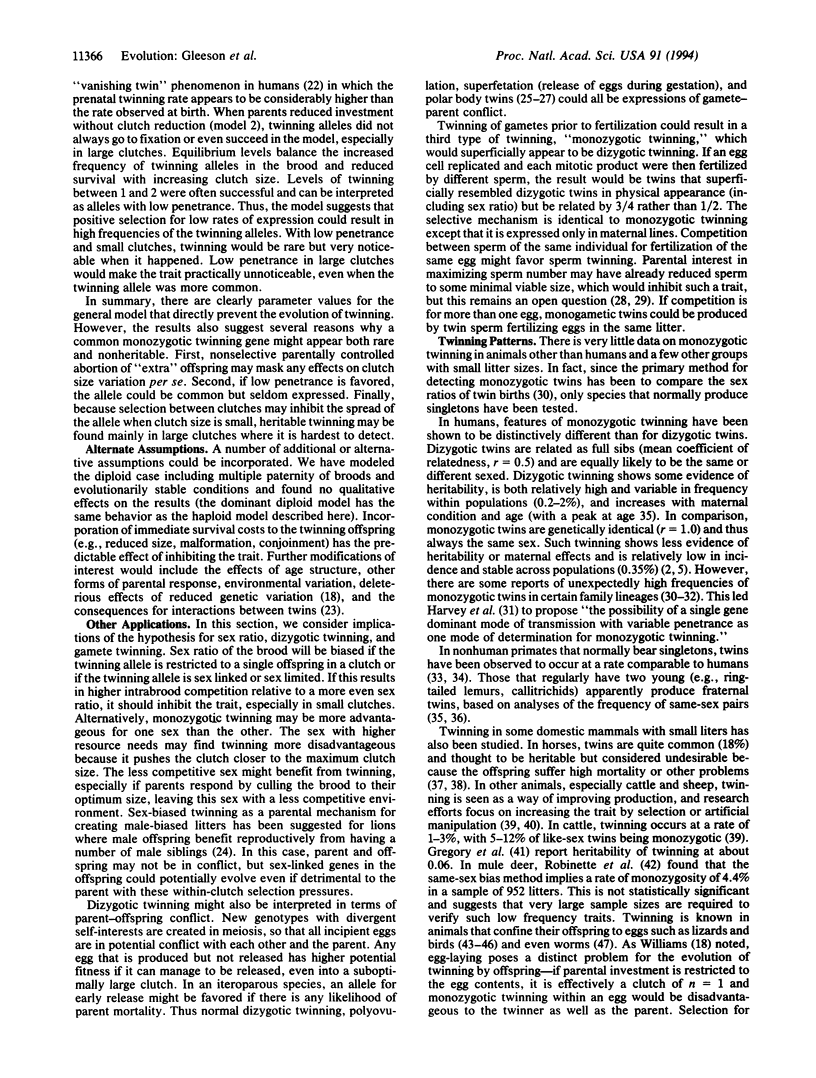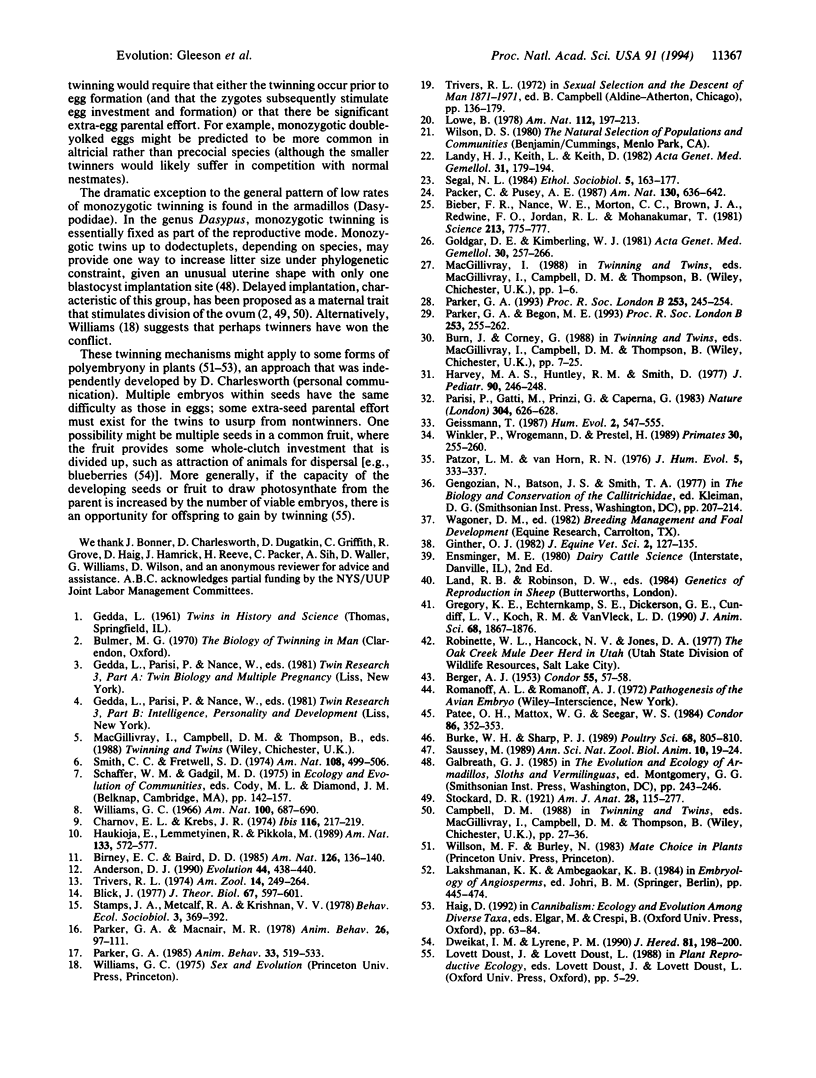Abstract
Monozygotic twinning is rare within populations yet taxonomically widespread. We explore the evolution of monozygotic twinning by modeling an allele in a newly formed offspring that causes it to undergo mitosis and separation to form one or more clones (twins), potentially in conflict with the parents' best interest. The success of this twinning allele in our haploid models depends on the balance of the benefit of increased frequency in the clutch and the cost of reduced survival resulting from limited parental resources. The trait reaches high frequency in a broad range of plausible conditions but also fails to spread or is kept at low frequency in others when the survival cost is high (e.g., in small clutch sizes). Interestingly, there are two reasonable conditions that predict high frequency of the trait but low visibility: random parental abortion and selection for low penetrance. Thus our models suggest reasons why monozygotic twinning might be rare, or alternatively, be common yet appear rare. In addition, we discuss the implications for sex-linked twinning, dizygotic twinning, and twinning by gametes.
Full text
PDF




Images in this article
Selected References
These references are in PubMed. This may not be the complete list of references from this article.
- Bieber F. R., Nance W. E., Morton C. C., Brown J. A., Redwine F. O., Jordan R. L., Mohanakumar T. Genetic studies of an acardiac monster: evidence of polar body twinning in man. Science. 1981 Aug 14;213(4509):775–777. doi: 10.1126/science.7196086. [DOI] [PubMed] [Google Scholar]
- Blick J. Selection for traits which lower individual reproduction. J Theor Biol. 1977 Aug 7;67(3):597–601. doi: 10.1016/0022-5193(77)90060-1. [DOI] [PubMed] [Google Scholar]
- Burke W. H., Sharp P. J. Sex differences in body weight of chicken embryos. Poult Sci. 1989 Jun;68(6):805–810. doi: 10.3382/ps.0680805. [DOI] [PubMed] [Google Scholar]
- Goldgar D. E., Kimberling W. J. Genetic expectations of polar body twinning. Acta Genet Med Gemellol (Roma) 1981;30(4):257–266. doi: 10.1017/s0001566000006462. [DOI] [PubMed] [Google Scholar]
- Gregory K. E., Echternkamp S. E., Dickerson G. E., Cundiff L. V., Koch R. M., Van Vleck L. D. Twinning in cattle: I. Foundation animals and genetic and environmental effects on twinning rate. J Anim Sci. 1990 Jul;68(7):1867–1876. doi: 10.2527/1990.6871867x. [DOI] [PubMed] [Google Scholar]
- Harvey M. A., Huntley R. M., Smith D. W. Familial monozygotic twinning. J Pediatr. 1977 Feb;90(2):246–247. doi: 10.1016/s0022-3476(77)80640-9. [DOI] [PubMed] [Google Scholar]
- Landy H. J., Keith L., Keith D. The vanishing twin. Acta Genet Med Gemellol (Roma) 1982;31(3-4):179–194. doi: 10.1017/s0001566000008278. [DOI] [PubMed] [Google Scholar]
- MacNair M. R., Parker G. A. Models of parent-offspring conflict. II. Promiscuity. Anim Behav. 1978 Feb;26(1):111–122. doi: 10.1016/0003-3472(78)90010-6. [DOI] [PubMed] [Google Scholar]
- Parisi P., Gatti M., Prinzi G., Caperna G. Familial incidence of twinning. Nature. 1983 Aug 18;304(5927):626–628. doi: 10.1038/304626a0. [DOI] [PubMed] [Google Scholar]
- Parker G. A., Begon M. E. Sperm competition games: sperm size and number under gametic control. Proc Biol Sci. 1993 Sep 22;253(1338):255–262. doi: 10.1098/rspb.1993.0111. [DOI] [PubMed] [Google Scholar]
- Parker G. A. Sperm competition games: sperm size and sperm number under adult control. Proc Biol Sci. 1993 Sep 22;253(1338):245–254. doi: 10.1098/rspb.1993.0110. [DOI] [PubMed] [Google Scholar]



